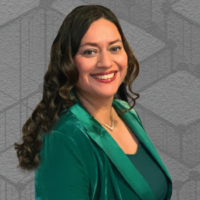
For me, one of the all-time greatest coaches is Sir Alex Ferguson of Manchester United F.C. The secret to Sir Alex’s success was his ability to know exactly what each player needed in order to triumph. He built many successful teams during his career due to a formula he used: “There are a number of subjective and objective criteria that I use as a way to rank players… When you employ this sort of measurement approach, it becomes far easier to define the very highest levels of performance. The people who are least confused about this are other players.” He knew no two players were alike and certain factors when put in place would help each individual player prosper at the club. There are many interesting stories about Sir Alex and how his management style was both individualized to help each player succeed, but also looked for commonalities among players that ultimately helped form a championship team. From my own personal experience as a high school soccer coach, it is not enough to have a star player, you need an entire team that can relate to each other on the field or pitch. The players need to be able to get along on the field and learn each other’s styles. They also must agree with the goals set forth by the coach and team. In essence, when any coach looks to form a team they are seeking more than just talent, they are looking for a player who culturally fits within the team, aligns with the goals of the team and who (for the most part) gets along with their teammates on the field.
Financial institutions (FIs) could take a page out of soccer coaching manuals when tackling risk management. Our cover article “Technology Will Not Save Us―Rethinking Risk Might” challenges us to reexamine our understanding of money laundering and what defines our anti-money laundering (AML) programs. As a coach looks for different factors that can lead to a successful team, financial crime prevention professionals can also retool their institutions’ risk programs by redefining geography risk, for example, to understand why money launderers find certain jurisdictions more attractive. Much like how a coach’s players are unique and need a certain type of environment and coaching style to succeed, so do money launderers. The author goes on to explain the attractiveness formula used by money launderers to determine where they are more likely to launder money. The author breaks it down further stating:
“Any movements should stand out as little as possible from noncriminal activity and always have a veneer of plausibility to avoid detection. This is easier to do if there are physical, cultural and economic factors that make transacting in a certain jurisdiction more acceptable.”
What are these factors? They are language, common cultural background, trade and physical distance. Be sure to read our lead story for more information about redefining money laundering risk.
As our industry is constantly evolving, this edition of ACAMS Today covers additional topics that are top of mind. The article “Ransomware on the Rise” shares key elements needed to protect FIs through the use of cybersecurity hygiene and controls. It also reminds us of the importance of cybersecurity. The article “Human Trafficking in the Era of COVID-19” is a wakeup call on how the pandemic has led to new trends in the heinous crime of human trafficking.
Moreover, 2020 brought difficult times, but it also brought the Anti-Money Laundering Act of 2020. Read the in-depth overview in the article titled “AMLA: The Gamechanger.”
Completing this edition’s lineup are two articles to help AML professionals dealing with the stress of the pandemic, the effects the pandemic had on the job market and predictions on what we can expect in the future.
We should all take a page out of Sir Alex’s playbook and be mindful of what each of our players (team members, employees, colleagues) need to succeed.
Karla Monterrosa-Yancey, CAMS
Editor-in-Chief
Follow us on Twitter: @acamstoday










